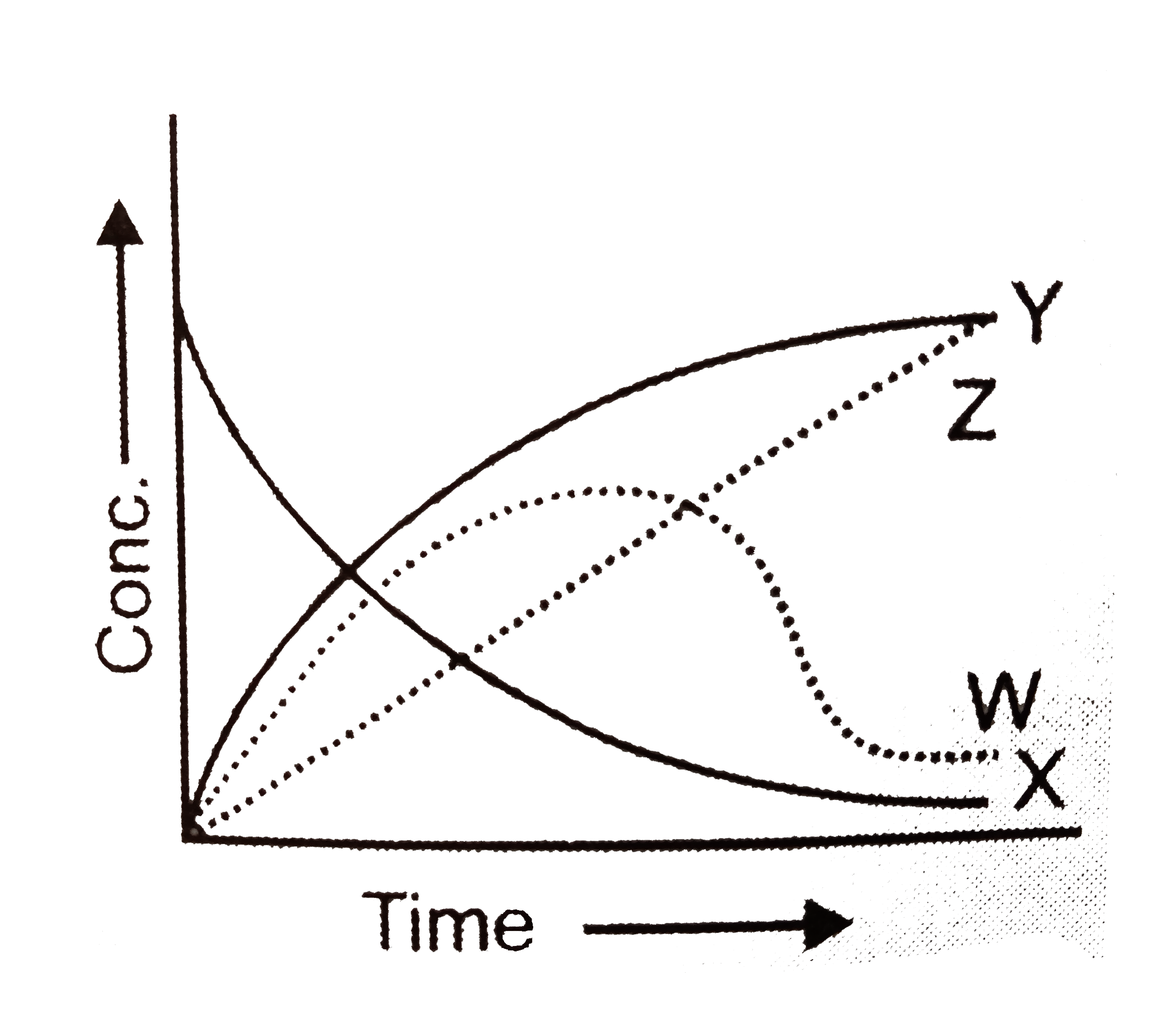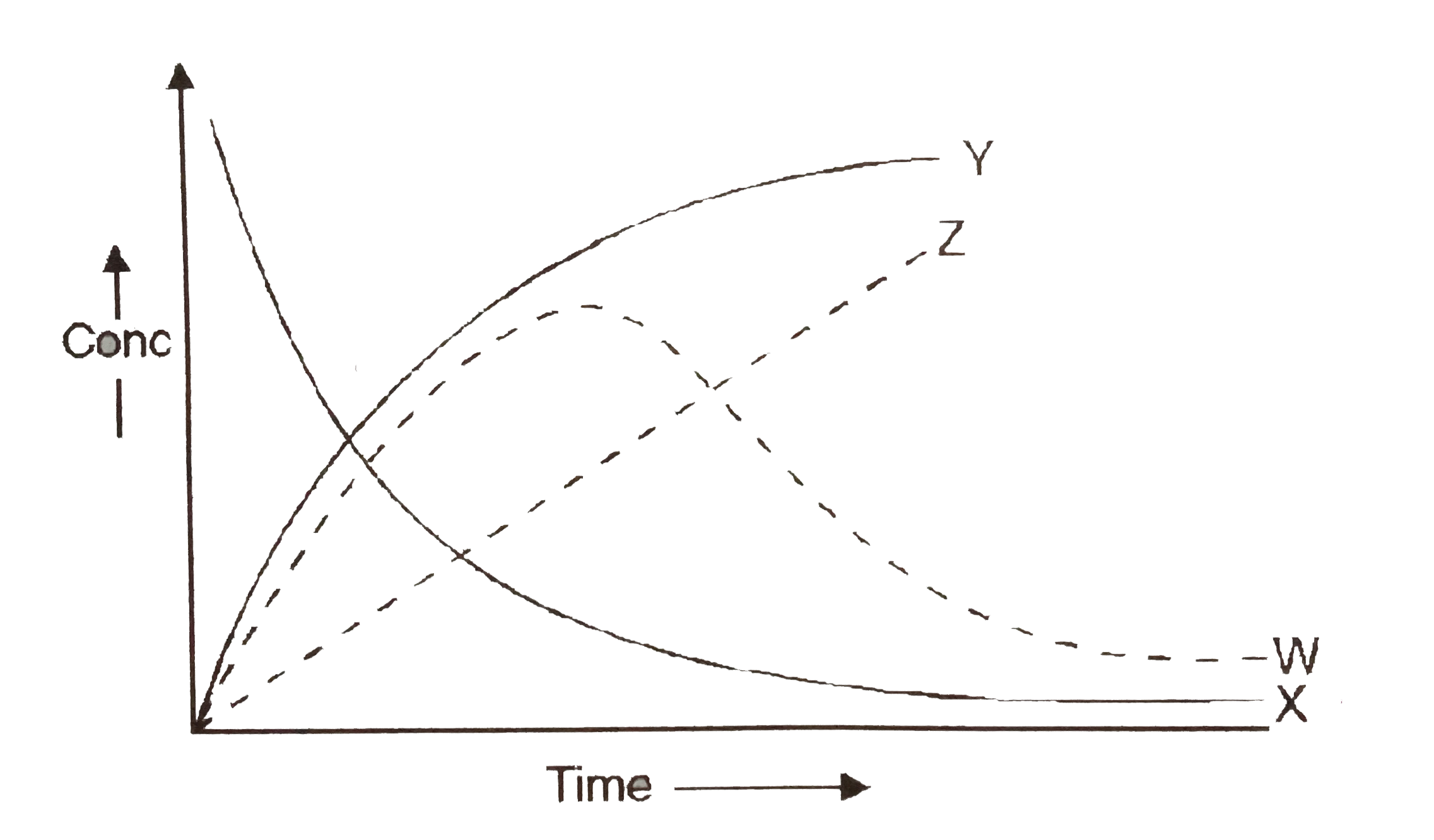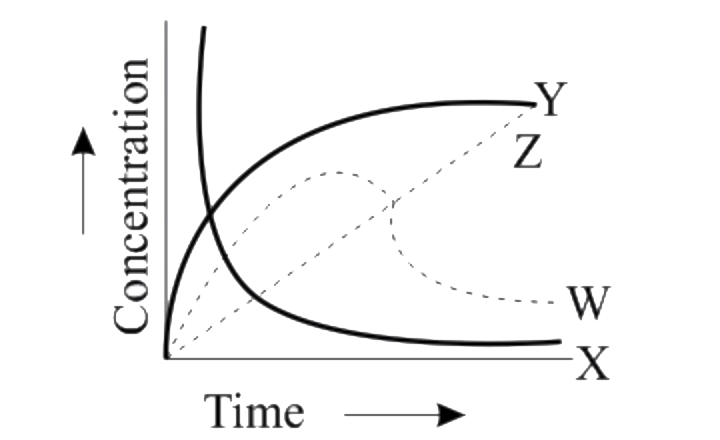For the reaction, A+B→C+D. The variation of the concentration of the products with time is given by the curve:

A
X
B
Y
C
Z
D
W
Text Solution
The correct Answer is:b
The curve Y shows a gradual increase in the concentration of products with time.
|
Updated on:21/07/2023
Related Playlists
- BOOK - P BAHADURCHAPTER - CHEMICAL KINETICSEXERCISE - Exercise 3B1videos
CHEMICAL KINETICS
- BOOK - P BAHADURCHAPTER - CHEMICAL KINETICSEXERCISE - Exercise 71videos
CHEMICAL KINETICS
- BOOK - P BAHADURCHAPTER - CHEMICAL KINETICSEXERCISE - Exercise 12videos
CHEMICAL KINETICS
- BOOK - P BAHADURCHAPTER - DILUTE SOLUTION AND COLLIGATIVE PROPERTIESEXERCISE - Exercise 9 Advanced Numerical12videos
DILUTE SOLUTION AND COLLIGATIVE PROPERTIES
Knowledge Check
- Question 1 - Select One
For the reaction A+B→C+D The variation of the concentration of the products is given by the curve
 AXBYCWDZ
AXBYCWDZ - Question 1 - Select One
For the reaction, A+B→C+D. The variation of the concentration of the products is given by the curve.
 AXBYCZDW
AXBYCZDW - Question 1 - Select One
For an irreversible chemical reaction, the concentration of the products with time
AincreaesBdecreasesCdoes not changeDsome more data required - Question 1 - Select One or More
For the reaction, 2A+B→3C, the reaction rate is equal to
A12d[A]dtB13d[C]dtCd[B]dtD−d[A]2dt - Question 1 - Select One
For the reaction
A+2B→2C
the rate law for the formation of C isArate=k[A][B]2Brate=k[A]2[B]2Crate=k[A][B]/[C]2Dimpossible to state from the stoichiometry of the reaction - Question 1 - Select One
For the reaction,A+B→2C+D, which one is the incorrect statement?
ARate of disappearance of A = Rate of disappearace of BBRate of disappearance of A = Rate of disappearace of DCRate of disappearance of B=2× rate of disappearace of CDRate of disappearance of B=12× rate of disappearace of C - Question 1 - Select One
For the reaction , A+3B→2C+d
which one of the following is not correct ?ARat or disappearance of A= Rate of formation of DBRate of formation of C =23× Rate of disappearane of DCRate of formation of D =13× Rate of disappearance of BDRate of disappearance of A=2× Rate of formation of C
Similar Questions
For the reaction, A+B→C+D. The variation of the concentration of the products is given by the curve.
 View Solution
View SolutionFor chemical reaction R→P the variation in the concentration (R ) vs .Time (t) plot given as
(i) predict the order of the reaction
(ii) what is he slope of the curve?View SolutionFor chemical reaction R→P the variation in the concentration (R ) vs .Time (t) plot given as
(i) predict the order of the reaction
(ii) what is he slope of the curve?View Solution

